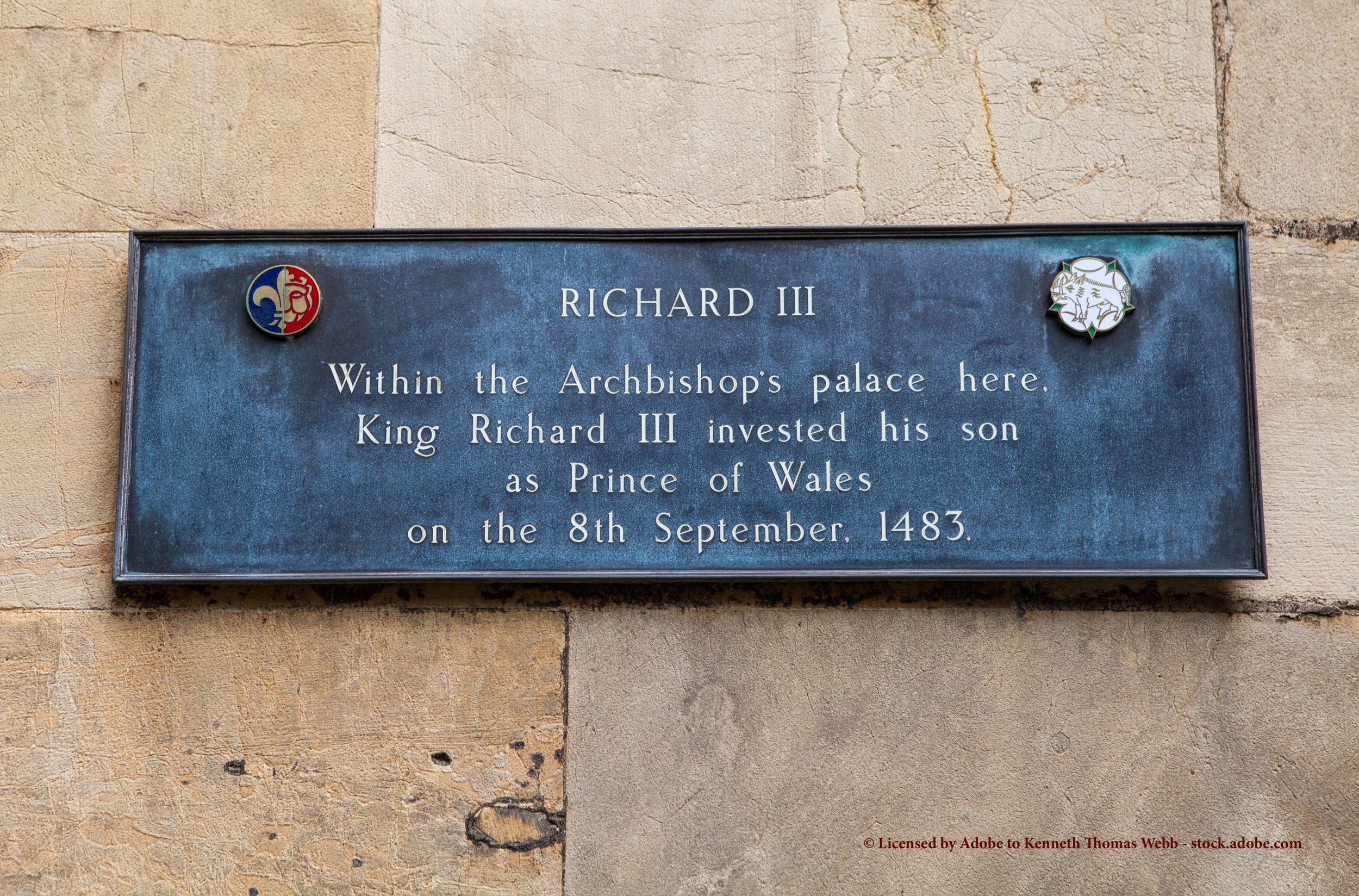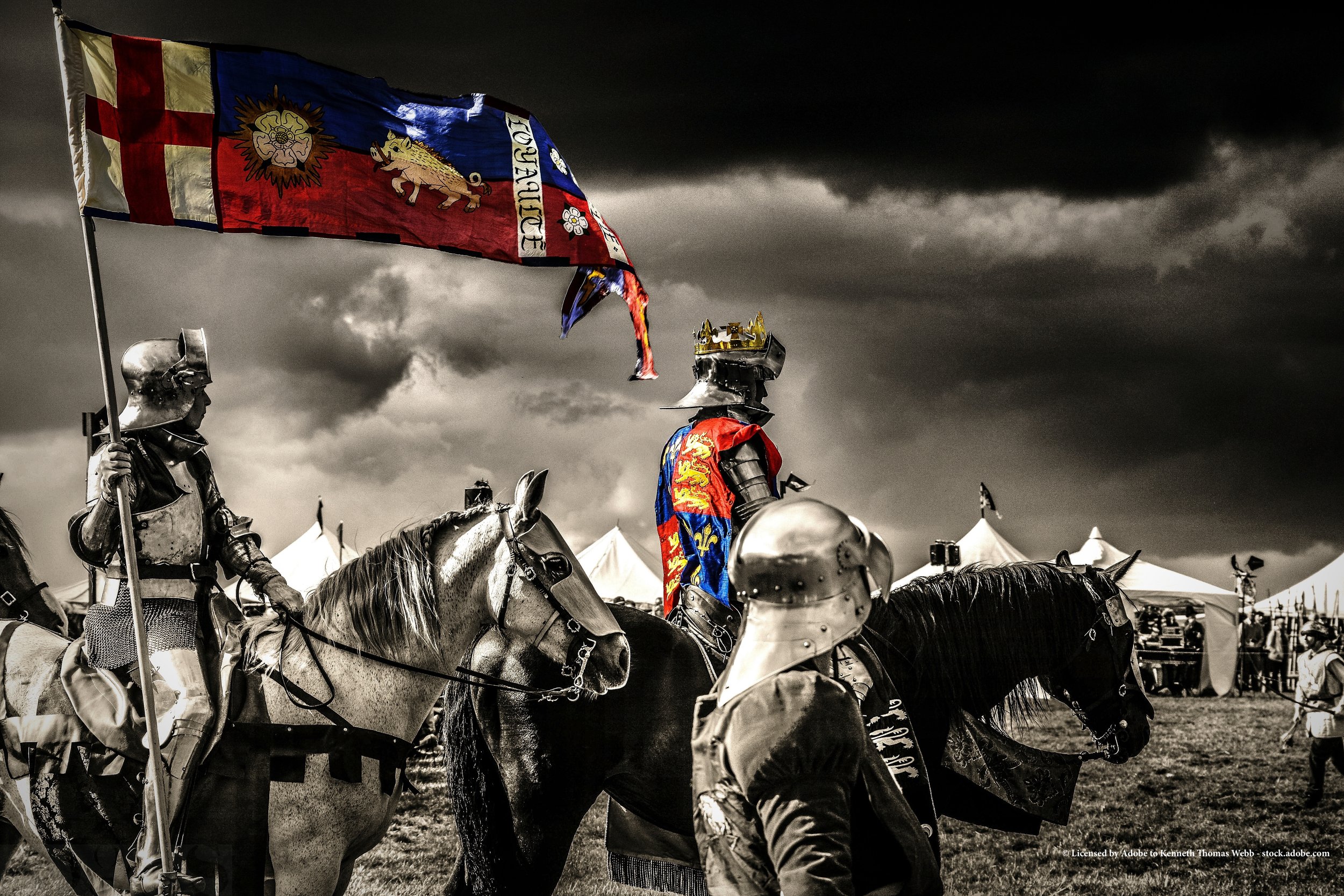On a Morning in Late Summer

Wars of the Roses
22 August 1485
It is right to begin at the story’s end, story if indeed we can call it. The Wars of the Roses plunged Britain into civil war for thirty two years. Two centuries later the country would be plunged into another even more vicious civil war. Two civil wars, yet only the second is called the English Civil War. The first is named after two branches of the same family each of whom contested the throne.
Of the fourteen pitched battles fought, the House of York won ten of them, the House of Lancaster only four. Yet, by a last minute act of treachery that left the Yorkist King alone except for his squire, a man switched sides and committed the King’s troops to his own cause.
My main source is the superb history by Desmond Seward ~ THE WARS OF THE ROSES (Folio Society Edition).
My notes commenced on 12 May 2023 and are separate from the Battle of Tewkesbury notes and the separate timeline that will appear in due course.. Desmond Seward's work was first published in 1995 by Constable & Robson. A second edition appeared in 2007. The Folio Society published and republished in 2011 and 2012.
Why is this important?
Because the body of Richard III was found in September 2012. An internet search provides this statement which I quote below the displayed Plaque.
“The remains of Richard III, the last English king killed in battle, were discovered within the site of the former Greyfriars Priory in Leicester, England, in September 2012.
Following extensive anthropological and genetic testing, the remains were ultimately reinterred at Leicester Cathedral on 26 March 2015.”
This throws up in the air almost all of the established narratives written over seven centuries, and, which were naturally taught as the accurate account. At school I remembered the goosepimply moment when informed that the boy-princes in the Tower of London had been murdered by Richard III.
My only question now is, 'What Really Happened?'
History is always written by the Victor. I therefore return to Desmond Seward's Introduction.
It is chilling, yet curiously uplifting, the author's literary mastery flying the standard high. At the end of this Part, below the licensed AdobeStock photograph of the place where now the former king lies, is a link should you wish to look at this whole subject in depth.
EXTRACT
from Desmond Seward's
Wars of the Roses (Folio Society)
During the last years of the fifteenth century, on a morning in late summer, a small man stood alone by himself in a meadow in the English Midlands. His horse had become bogged down in some marshy ground so that he had been forced to dismount. All around him lay his dead or dying supporters, while others could be seen fleeing for their lives. In steel from head to foot, with a jewelled coronet on his helmet, he grasped a steel-handled battle hammer. Although his sharp face was hidden by the helmet, he could nonetheless be heard shouting 'Treason! Treason!', over and over again.
A growing mob of enemy soldiers was running towards him but, declining to mount a horse brought by his last faithful squire, he refused to leave the battlefield, and waited grimly. He meant to fight to the
death. Rank-and-file, men-at-arms, bill men or bowmen, they swarmed about him like so many hounds with a fox.
Swinging that murderous little hammer to the very end, still screaming'Treason!', finally he was mortally wounded by a Welshman's[i] halberd and went down in the mud. They ripped off the dead man's armour and felt underclothing, kicking the body as it rolled in the dirt. At last his corpse, naked as the day he was born, smeared with mud and blood, a halter tied round its neck, was slung over a horse behind his pursuivant Blanc Sanglier[ii] who was made to carry of the White Boar in derision. When the two rode into Leicester, his dangling head smashed into a stone bridge, bruising his face still further. As he passed, men yelled insults and curses at what was left of Richard III.
According to tradition, Reginald Bray, an official in the household of Henry Tudor's mother, found the dead monarch's coronet in a hawthorn bush and at once took it to Lord Stanley, Henry's stepfather. Stanley, who had betrayed Richard by taking his troops over to the other side, placed the diadem on his stepson's head, shouting 'King Henry! King Henry!', a cry which was taken up joyfully by everyone present.
The Tudor Age had begun. it was almost – though not quite – the end of those thirty years of bloodshed known to history as the wars of the Roses.
End of Extract by Desmond Seward
[i] The detail that Richard III was killed by a Welshman with a halberd is given only by Jean Molinet, Chroniques, ed. S.A. Buchon, Paris, 1827-8.
[ii] pursuing white boar
23 May 2023
All Rights Reserved
© 2023 Kenneth Thomas Webb
A depiction of Richard III on Bosworth Field on the morning of the battle just before engagement
Ken Webb is a writer and proofreader. His website, kennwebb.com, showcases his work as a writer, blogger and podcaster, resting on his successive careers as a police officer, progressing to a junior lawyer in succession and trusts as a Fellow of the Institute of Legal Executives, a retired officer with the Royal Air Force Volunteer Reserve, and latterly, for three years, the owner and editor of two lifestyle magazines in Liverpool.
He also just handed over a successful two year chairmanship in Gloucestershire with Cheltenham Regency Probus.
Pandemic aside, he spends his time equally between his city, Liverpool, and the county of his birth, Gloucestershire.
In this fast-paced present age, proof-reading is essential. And this skill also occasionally leads to copy-editing writers’ manuscripts for submission to publishers and also student and post graduate dissertations.








